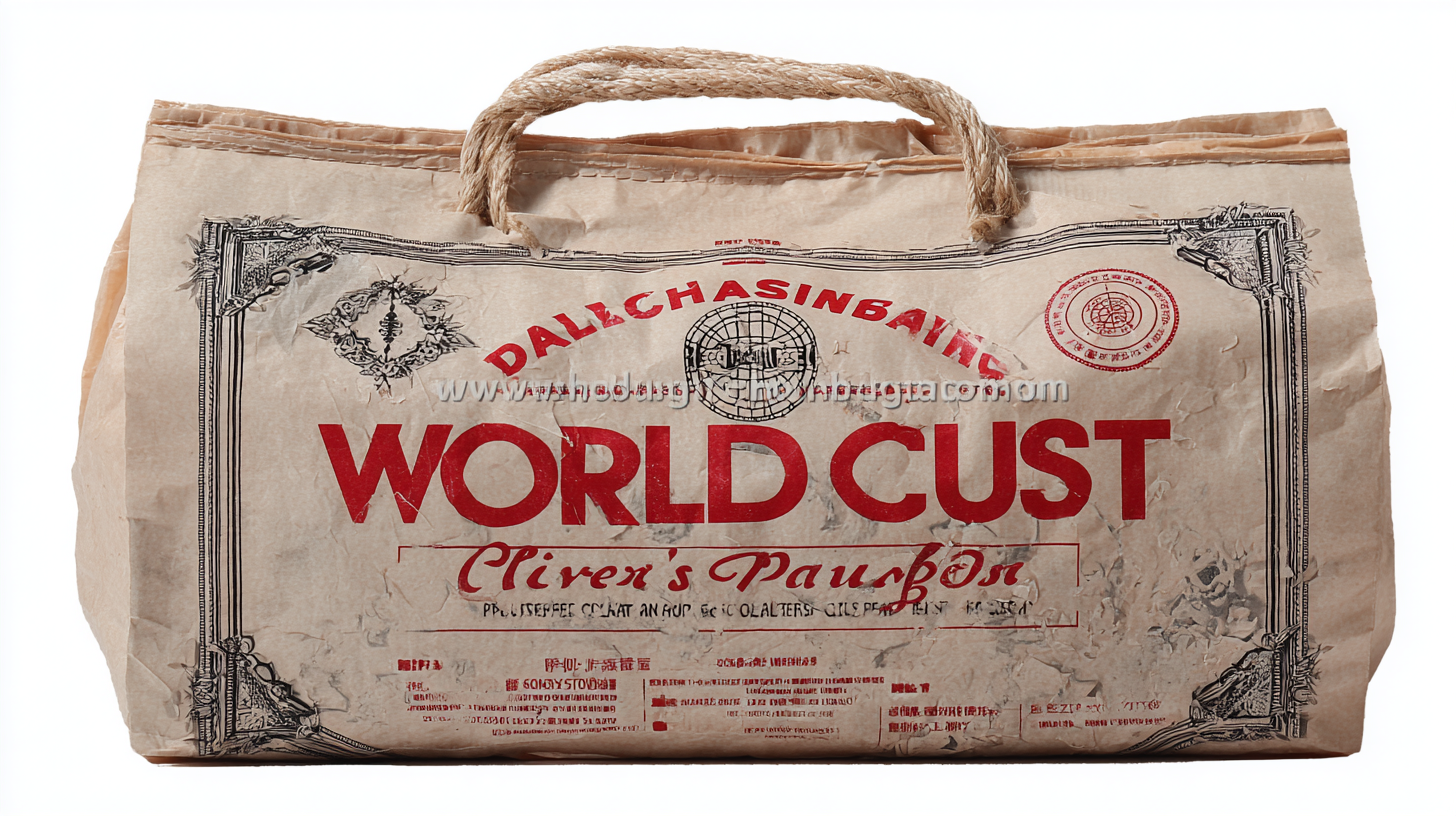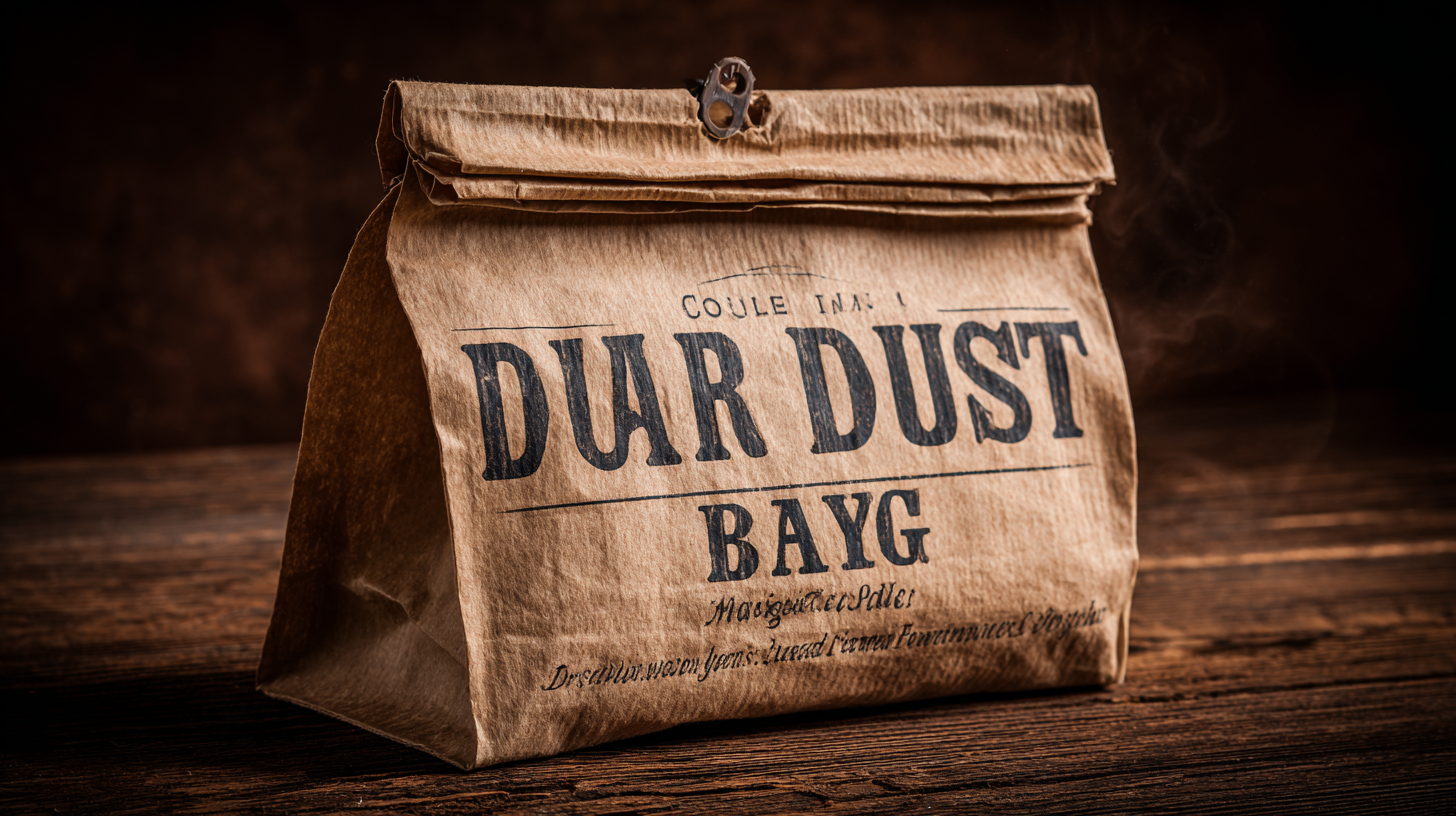In today's competitive global market, the superiority of products often hinges on the blend of innovation and after-sales service, particularly in the realm of cleaning solutions. The focus of this blog is to shed light on how Chinese manufacturers have distinguished themselves through world-class manufacturing practices, especially in the production of the renowned Paper Dust Bag for Vacuum Cleaner. By emphasizing an exceptional level of customer support and strategically managing repair costs, these manufacturers are not only enhancing user satisfaction but are also fortifying their brand reputation internationally.

This approach has allowed them to export not just products but a promise of quality and reliability, making their vacuum cleaner dust bags a preferred choice among consumers worldwide. As we delve deeper into this topic, we will explore the intricacies of their after-sales service advantages and the cost-effective strategies employed for maintenance, which ultimately contribute to the enduring success of their offerings.
The vacuum cleaner dust bag industry in China has seen remarkable growth in recent years, transitioning from a local market focus to a global powerhouse. This surge can be attributed to advancements in manufacturing technologies, increased investment in quality control, and a robust supply chain network. As Chinese manufacturers embrace world-class production standards, they are now able to meet the diverse needs of international markets with innovative designs and sustainable materials.
Moreover, the growing environmental consciousness among consumers has spurred the demand for high-quality, reusable, and biodegradable dust bags. Chinese companies are now leading the charge in developing eco-friendly alternatives that not only enhance performance but also minimize environmental impact. This shift has positioned China as a crucial player in the global vacuum cleaner dust bag market, with exports rapidly increasing to meet the needs of consumers worldwide. By harnessing both traditional craftsmanship and modern technology, China is not just exporting products but also a commitment to quality and sustainability in manufacturing.

The vacuum cleaner industry is witnessing a remarkable transformation, driven by innovative technologies that enhance dust bag production. As the global market continues to expand, projected to reach $74.98 billion by 2030, manufacturers are focusing on creating high-performance dust bags that offer superior filtration and increased sustainability. Advanced materials and smart designs are not just improving efficiency; they're also ensuring that these essential household items contribute to cleaner living environments.

Tip 1: When choosing a vacuum cleaner, looking for models with reusable or high-efficiency particulate air (HEPA) bags can significantly reduce environmental impact while maintaining optimal performance. Consider investing in washable dust bags that minimize waste and cut long-term costs.
Additionally, automation and smart manufacturing techniques are streamlining production processes. This not only enhances quality and consistency but also reduces manufacturing time and costs. As companies embrace these cutting-edge methods, consumers can expect to see ongoing improvements in the durability and effectiveness of vacuum cleaner dust bags.
Tip 2: Always check the filtering capabilities of vacuum cleaner bags. Opt for options designed to trap allergens and fine dust particles, ensuring your home stays clean and healthy.
In the realm of world-class manufacturing, the importance of sustainable practices cannot be overstated. As the demand for high-quality products like vacuum cleaner dust bags surges globally, manufacturers are embracing eco-friendly methods to meet international standards. This commitment not only enhances product quality but also boosts brand reputation, driving customer loyalty.
**Tips for Sustainable Manufacturing:**
1. **Embrace Renewable Materials:** Using biodegradable or recycled materials in production can significantly reduce environmental impact. Opt for suppliers who prioritize sustainability in their raw materials.
2. **Implement Energy-Efficient Processes:** By integrating energy-efficient machinery and processes, manufacturers can decrease their carbon footprint while also cutting operational costs. This practice aligns with global standards and encourages long-term sustainability.
3. **Regular Compliance Checks:** Keep abreast of international regulations and standards for manufacturing sustainability. Regular audits and updates to practices ensure that businesses stay compliant while enhancing their manufacturing capabilities.
By prioritizing these sustainable practices, manufacturers not only contribute to a healthier planet but also position themselves as leaders in the competitive global market.
This chart illustrates the export volume of vacuum cleaner dust bags from various countries, showcasing their contributions to the global market and highlighting sustainable practices in manufacturing.
The global demand for quality dust bags is witnessing significant growth, fueled by trends in manufacturing and increasing consumer awareness. The filling machine market is projected to reach $5.75 billion by 2025, with an impressive compound annual growth rate (CAGR) of 5.02% from 2025 to 2032. This trend reflects a strong shift towards automation and efficiency in production, alongside a rising need for high-quality dust collection solutions in various industries.
Meanwhile, the industrial dust collector market is expected to surge from $8.27 billion in 2025 to $11.96 billion by 2032, with a CAGR of 5.4%. This growth highlights the critical importance of effective dust management systems in maintaining workplace safety and compliance with environmental regulations. The EMEA air filter market, with a projected CAGR of 6.5% from 2020 to 2032, indicates a growing emphasis on air quality control, further underscoring the escalating demand for reliable dust bag systems globally. As industries adapt to these trends, the focus on quality and innovation becomes paramount, ensuring that manufacturers can meet the evolving needs of their customers.
When selecting vacuum cleaner dust bags, it's essential to consider factors that cater to your specific cleaning needs. According to a recent industry report by Freedonia Group, the demand for vacuum cleaner bags is anticipated to rise significantly, driven by the increasing awareness of indoor air quality. This emphasizes the need for high-quality dust bags that can effectively trap allergens and pollutants. For households with pets or allergies, HEPA (High-Efficiency Particulate Air) dust bags are recommended, as they can capture up to 99.97% of particles as small as 0.3 microns, ensuring a healthier living environment.
Moreover, selecting dust bags that fit your vacuum cleaner model is critical. The market has seen a surge in compatibility options where generic bags make up about 28% of the total sales, according to Statista. However, investing in OEM (Original Equipment Manufacturer) bags ensures optimal performance and reduces the risk of damage to your vacuum cleaner. Additionally, consider the capacity of the dust bag; larger capacity bags can hold more debris, which is ideal for larger households, reducing the frequency of replacements. Understanding your individual needs will lead to a more effective and satisfying vacuum cleaning experience.
| Type of Dust Bag | Material | Filtration Level | Capacity (Liters) | Recommended Uses |
|---|---|---|---|---|
| HEPA Filter Bags | Synthetic Fiber | 99.97% at 0.3 microns | 3.5 Liters | Allergy Sufferers, Fine Dust |
| Paper Dust Bags | Paper | Standard Filtration | 2.0 Liters | General Housekeeping |
| Cloth Dust Bags | Fabric | Reusable, Low Filtration | 4.0 Liters | Heavy-Duty Cleaning |
| Allergen Control Bags | Polyethylene | High Filtration | 3.0 Liters | Pet Owners, Allergies |
